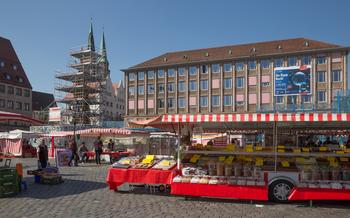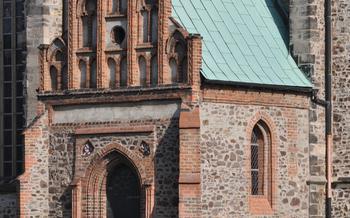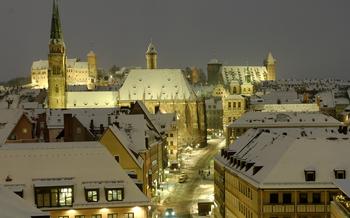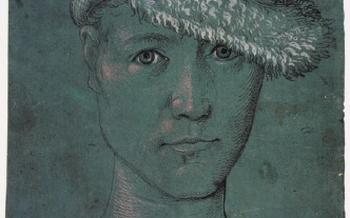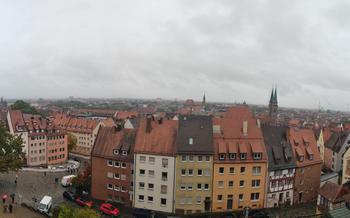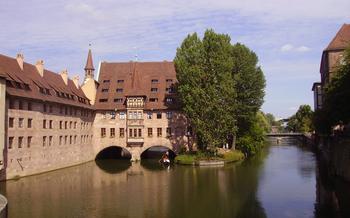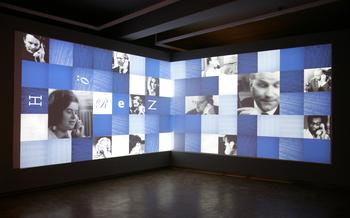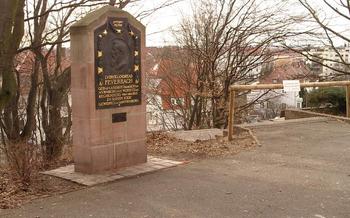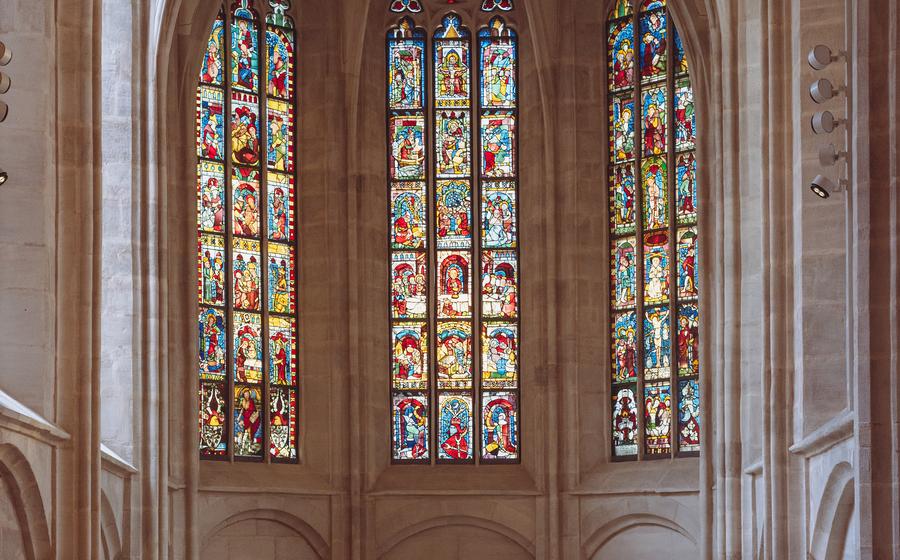
St. Martha Church
- A City of History and Culture
- St. Martha Church: An Architectural Masterpiece
- History and Significance of the Church
- The Church's Role in the Community
- Unique Features and Design Elements
- Exploring the Church's Interior
- The Church's Historical Significance
- A Place of Worship and Community
- Guided Tours and Educational Programs
- Nuremberg's Old Town Charm
- Nearby Attractions and Activities
- St. Martha Church in Literature and Art
- Events and Festivals
- Preservation and Restoration Efforts
- St. Martha Church and the Local Community
- The Church's Legacy and Future
A City of History and Culture
Nuremberg, a city steeped in history and cultural heritage, boasts a rich tapestry of architectural wonders, historical landmarks, and cultural institutions. As one of the largest cities in Bavaria, Nuremberg played a pivotal role in the Holy Roman Empire, serving as an important trading hub and a center of arts and crafts. Its strategic location on the Pegnitz River further solidified its significance as a commercial and cultural crossroads.
During World War II, Nuremberg became the infamous setting for the Nuremberg Trials, where Nazi leaders were tried for war crimes and crimes against humanity. This dark chapter in history left an indelible mark on the city, prompting deep reflection and reconciliation efforts. Despite the scars of the past, Nuremberg has emerged as a vibrant and cosmopolitan city, renowned for its art and music scene, as well as its commitment to preserving its rich cultural heritage.
St. Martha Church: An Architectural Masterpiece
The St. Martha Church stands as a testament to the architectural prowess of the Gothic era. Its construction, spanning from the 14th to the 16th centuries, showcases the intricate details and soaring heights characteristic of Gothic architecture. The church's exterior is adorned with intricate carvings, delicate tracery, and elegant buttresses that lend it an air of grandeur.
Inside, the church's nave is supported by slender columns and ribbed vaults that create a sense of spaciousness and awe. The walls are adorned with vibrant frescoes depicting biblical scenes and narratives, while the stained-glass windows cast a kaleidoscope of colors onto the interior, creating a serene and ethereal atmosphere.
History and Significance of the Church
St. Martha Church holds a significant place in the history of Nuremberg. It served as a parish church for the city's residents and was a central venue for religious ceremonies, festivals, and community gatherings. During the Reformation, the church became a focal point for the Protestant movement in Nuremberg, and Martin Luther himself preached within its walls, leaving a lasting impact on the city's religious landscape.
The Church's Role in the Community
St. Martha Church has always been deeply intertwined with the lives of the Nuremberg community. It has served as a place of worship, a gathering place for social and cultural events, and a refuge during times of crisis. Throughout the centuries, the church has undergone several renovations and expansions, reflecting the changing needs and tastes of the community.
Unique Features and Design Elements
The St. Martha Church boasts several unique features that set it apart from other Gothic churches in the region. The most striking feature is its impressive stained-glass windows, which depict scenes from the Bible and the lives of saints. These windows, crafted by skilled artisans, fill the interior with a radiant glow, creating a sense of awe and wonder.
Another notable feature is the church's intricate sculptures, which adorn the exterior and interior. These sculptures, carved with precision and artistry, depict biblical figures, angels, and mythical creatures, adding depth and richness to the church's overall design.
Exploring the Church's Interior
St. Martha Church's interior is a testament to the artistry and devotion of its builders. The church's stunning stained glass windows are a highlight, depicting intricate scenes from the Bible and the lives of saints. The intricate sculptures and artwork adorning the walls, columns, and altar add to the church's visual splendor. Visitors can admire the finely carved wooden choir stalls, intricate stone carvings, and delicate frescoes that grace the church's interior. The church's acoustics are renowned for their clarity and resonance, making it a popular venue for concerts and musical performances. The peaceful atmosphere of the church's interior invites visitors to pause, reflect, and immerse themselves in prayer or contemplation, finding solace and inspiration within the sacred space.
The Church's Historical Significance
St. Martha Church holds a significant place in the history of the Reformation, a pivotal religious movement that swept across Europe in the 16th century. The church's association with Martin Luther, the leading figure of the Reformation, adds to its historical importance.
In 1525, Martin Luther visited Nuremberg and preached at St. Martha Church. His visit left a lasting impact on the city, contributing to the spread of Lutheranism in the region. The church became a center for Lutheran worship and reform, embracing the principles of the Reformation and promoting religious freedom.
St. Martha Church also played a role in the Peasants' War, a major uprising of peasants against feudal lords and the Catholic Church that took place in Germany in the 16th century. The church served as a refuge for peasants seeking protection from the authorities. Its association with the Peasants' War further solidified its significance as a symbol of religious freedom and social justice.
Throughout history, St. Martha Church has stood as a testament to the power of faith and the pursuit of religious freedom. Its historical significance continues to resonate, making it a cherished landmark and a symbol of the city's rich cultural heritage.
A Place of Worship and Community
St. Martha Church serves as a vital place of worship for the local community. Regular church services are held, allowing parishioners to come together for prayer, fellowship, and spiritual guidance. The church also hosts various events throughout the year, such as concerts, exhibitions, and social gatherings, which provide opportunities for community members to connect and celebrate their shared faith.
Beyond its religious significance, St. Martha Church is also an important community hub. The church offers outreach programs that support those in need, including food banks, counseling services, and assistance for the elderly. It also hosts community events such as charity bazaars, workshops, and educational programs that promote social engagement and foster a sense of belonging among the residents.
Guided Tours and Educational Programs
For those seeking a deeper understanding of St. Martha Church's history and architecture, guided tours are available. Knowledgeable guides lead visitors through the church, providing insights into its construction, unique features, and historical significance. These tours offer a personalized experience, allowing visitors to ask questions and gain a comprehensive understanding of this architectural masterpiece.
In addition to guided tours, the church offers educational programs for visitors of all ages. These programs aim to engage and educate visitors about the church's history, art, and cultural significance. Interactive exhibits and displays provide hands-on learning experiences, making the church's rich heritage accessible and enjoyable for everyone. Whether you're a history buff, an architecture enthusiast, or simply curious about this iconic landmark, St. Martha Church offers a range of educational opportunities to enrich your visit.
Nuremberg's Old Town Charm
St. Martha Church stands as a testament to Nuremberg's rich history and architectural heritage. Its location in the heart of the city's Old Town places it amidst a treasure trove of historic buildings, charming streets, and picturesque squares. Exploring the area surrounding the church is a journey through time, where visitors can discover remnants of the city's medieval past and admire the architectural styles that have shaped Nuremberg over the centuries.
Strolling through the cobblestone streets, visitors will encounter landmarks such as the imposing Nuremberg Castle, a symbol of the city's imperial history. The Germanisches Nationalmuseum, a renowned institution dedicated to German art and culture, is also within walking distance, showcasing a vast collection of artifacts from prehistoric times to the present day.
For those seeking a taste of Nuremberg's culinary delights, the Old Town offers a variety of traditional restaurants and cafes, serving local specialties such as the famous Nuremberg sausages. Shopping enthusiasts will find a plethora of boutiques and specialty stores offering unique souvenirs and handcrafted items.
During the festive season, Nuremberg transforms into a winter wonderland, with its renowned Christmas market taking center stage. The market, one of the oldest and largest in Germany, fills the air with the aroma of gingerbread, mulled wine, and roasted almonds, creating a magical atmosphere that draws visitors from far and wide.
Nearby Attractions and Activities
Beyond the church's immediate vicinity, visitors can explore a wealth of attractions in Nuremberg's historic center. A short walk from St. Martha Church lies the imposing Nuremberg Castle, a symbol of the city's rich history. With its towering walls, magnificent architecture, and intriguing museum exhibits, the castle offers a fascinating glimpse into Nuremberg's past.
For a journey into art and culture, the Germanisches Nationalmuseum awaits. This renowned museum houses an extensive collection of German art, from medieval masterpieces to contemporary creations. Visitors can marvel at works by Dürer, Cranach, and other artistic luminaries, gaining a deeper understanding of Germany's artistic heritage.
Music lovers will delight in attending a performance at the State Opera House, a cultural landmark located near the church. The theater presents a diverse repertoire of operas, ballets, and concerts, featuring world-class artists and captivating productions.
For a tranquil respite, take a leisurely stroll along the picturesque Pegnitz River, which meanders through the heart of Nuremberg. Admire the charming bridges, historic buildings, and serene landscapes that line the riverbanks, offering a peaceful escape from the bustling city center.
St. Martha Church in Literature and Art
St. Martha Church has served as a muse for artists and writers throughout history, leaving an indelible mark on Nuremberg's cultural landscape. In literature, the church has been featured in novels, poems, and short stories, each capturing its unique charm and significance. Local authors have drawn inspiration from its Gothic architecture, its rich history, and its role in the community, weaving it into their narratives as a symbol of faith, resilience, and transformation.
Artistic representations of the church abound, with paintings and drawings capturing its intricate details and picturesque surroundings. Local artists have immortalized the church's beauty in their works, showcasing its grandeur and its role as a focal point of the city's skyline. These artistic interpretations provide a glimpse into the church's enduring legacy and its ability to inspire creative expression.
The church's cultural significance extends beyond its physical presence, as it has become a symbol of Nuremberg's identity and heritage. Its unique architectural features, its historical associations, and its role in the community have made it a beloved landmark, deeply embedded in the city's cultural fabric. St. Martha Church continues to inspire and captivate both locals and visitors alike, serving as a source of pride and a reminder of the city's rich artistic and cultural traditions.
Events and Festivals
St. Martha Church hosts a variety of events and festivals throughout the year, offering visitors and locals alike opportunities for cultural immersion and participation. These events showcase the church's rich history, traditions, and artistic heritage.
One of the highlights is the annual St. Martha's Day Festival, held in late July or early August. This vibrant festival features lively processions, music performances, traditional food stalls, and family-friendly activities. Visitors can immerse themselves in the community spirit and celebrate the church's patron saint.
The church also hosts regular concerts and recitals, showcasing talented local and international musicians. These concerts feature a diverse range of musical genres, from classical to contemporary, and offer a unique opportunity to experience the church's exceptional acoustics.
During religious holidays, such as Christmas and Easter, the church holds special services and events. These services often feature elaborate decorations, traditional music, and readings, allowing visitors to experience the church's spiritual atmosphere and connect with the local community's religious traditions.
Whether it's an annual festival, a musical performance, or a special religious service, St. Martha Church offers a variety of events that provide visitors with a deeper understanding of the church's cultural significance and its role in the community.
Preservation and Restoration Efforts
The passage of time and the effects of weather and pollution have taken their toll on St. Martha Church, necessitating ongoing efforts to preserve and restore its historical integrity. These efforts involve meticulous restoration work on the church's exterior and interior, using traditional techniques and materials to maintain its original character.
One of the key challenges in preserving St. Martha Church is balancing the need for restoration with the desire to retain its authenticity. The church's exterior, with its intricate carvings and delicate stonework, requires regular cleaning and maintenance to prevent further erosion and damage. Restorers work painstakingly to repair any cracks or damage to the stone, using techniques that match the original craftsmanship.
Inside the church, the stunning stained glass windows, which depict biblical scenes and historical figures, have undergone careful restoration to preserve their vibrant colors and intricate details. Skilled artisans use traditional methods to repair or replace damaged glass pieces, ensuring that the windows continue to shine with their original brilliance.
Preserving St. Martha Church is not just about maintaining its physical structure but also about safeguarding its cultural and historical significance. The church's unique features, such as its Gothic architecture, intricate sculptures, and historical artifacts, are carefully documented and preserved for future generations.
The community plays a vital role in supporting the preservation efforts of St. Martha Church. Through donations, volunteer work, and community engagement, the local community ensures that this architectural masterpiece continues to stand as a testament to Nuremberg's rich history and cultural heritage.
St. Martha Church and the Local Community
St. Martha Church has played a pivotal role in shaping the social and cultural fabric of Nuremberg. Since its inception, it has been an integral part of the community, fostering a sense of belonging and spiritual connection among its residents. The church has always been a place of refuge, offering solace and support during difficult times. It has also been instrumental in organizing community events, bringing people together to celebrate festivals, traditions, and milestones.
One of the key ways in which the church has impacted the community is through its outreach programs. The church has been actively involved in providing assistance to those in need, organizing food banks, clothing drives, and other charitable initiatives. It has also established support groups for individuals facing various challenges, offering counseling and guidance.
The church's commitment to education has also been instrumental in enriching the community. It has established a Sunday school program for children, providing them with religious instruction and moral guidance. The church also hosts regular seminars, workshops, and lectures on various topics, fostering intellectual and spiritual growth within the community.
The Church's Legacy and Future
St. Martha Church stands as a testament to the enduring spirit of Nuremberg, having weathered centuries of change and upheaval. Its legacy as a place of worship, a center of community, and a symbol of religious freedom remains strong, ensuring its continued significance in the city's cultural landscape.
As the church looks toward the future, plans are underway for further restoration and preservation projects. These efforts aim to safeguard its architectural integrity and ensure that future generations can appreciate its beauty and historical significance. By maintaining its role as a place of worship, community gatherings, and cultural events, St. Martha Church will continue to be a vibrant and cherished part of Nuremberg's identity.
The church's legacy extends beyond its physical structure, as it has become an integral part of the city's social and cultural fabric. Its influence on the community is evident through the various initiatives and events organized by the church, which foster a sense of belonging and unity among its members. St. Martha Church's enduring presence in Nuremberg serves as a reminder of the city's rich history and its commitment to preserving its cultural heritage.
